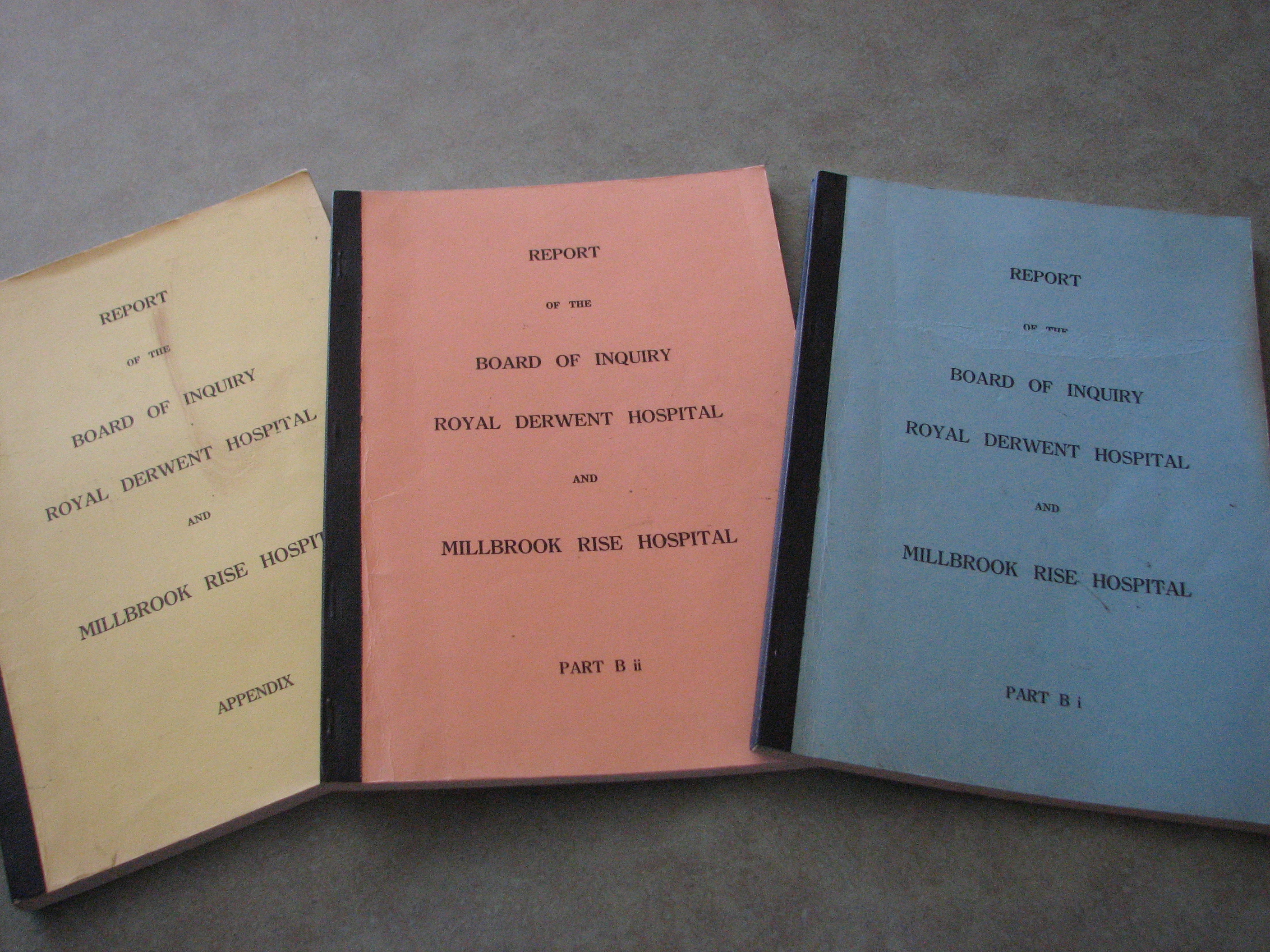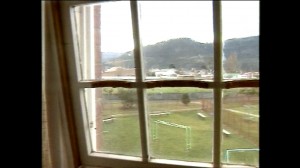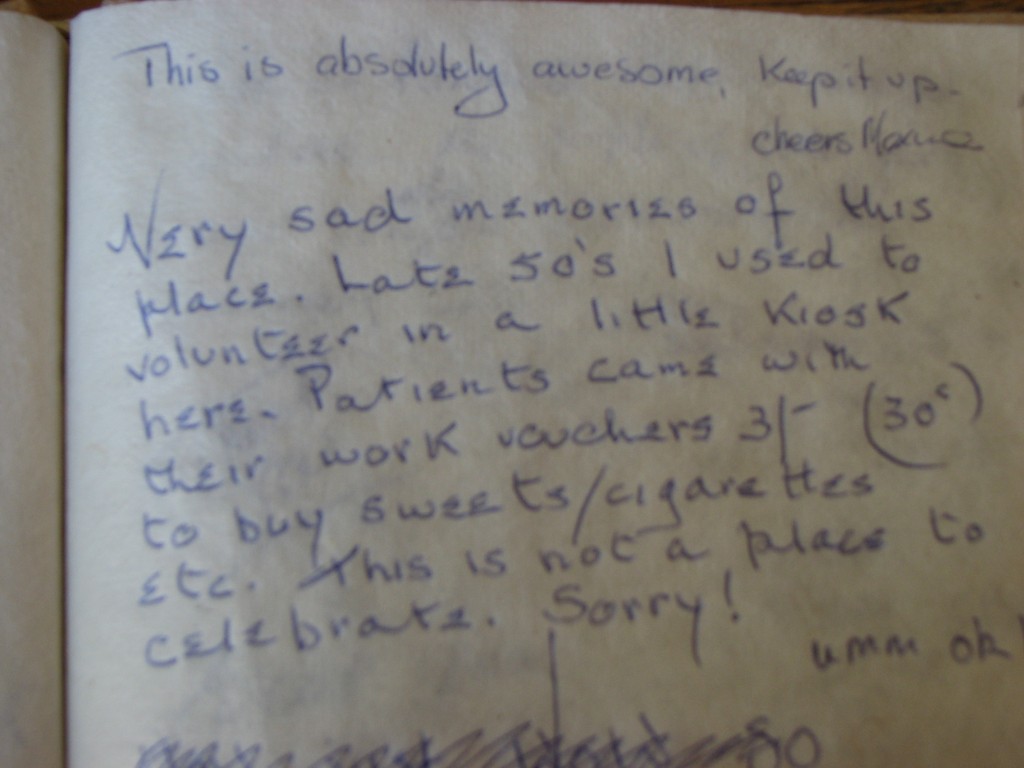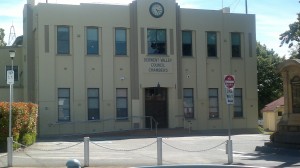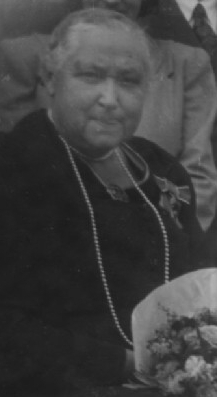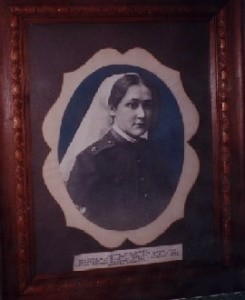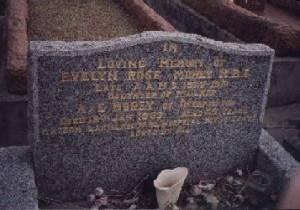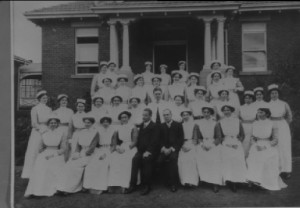 The biggest news story for the year would have to be the start of the physical restoration of the Barracks and Bronte Ward. Although the Derwent Valley Council have reported that
The biggest news story for the year would have to be the start of the physical restoration of the Barracks and Bronte Ward. Although the Derwent Valley Council have reported that
“The former psychiatric institution is recognised as having significant heritage values both in terms of its architecture and social history. After a chequered past, work is now being done to ensure its conservation for future generations and to look at adaptive reuse for some of the original buildings on the site”. (2012-13 annual report, page 9)
It appears that restoration is currently only for the architectural side only at the moment. However it is important that the DVC can see the “social history” from all parties who had something to do with the former hospital. It is this rich cultural heritage that should be shown to the world when the Derwent Valley Council opens the site to the public this Feb-March 2014.
We started the years off with being involved with the open days at the site and we released a 40 minute documentary to view free Willow Court Documentary (first public release). We then attended the Frascati House Heritage Day and made a podcast of the history that was spoken by the Daughter of Dr Brothers the Medical Superintendent during the second world war when she lived at the house with her brothers Frescati Heritage Open Day Our recording is now used as part of the New Norfolk Heritage Walk tour. Frescati House Plan (including audio link)
Tasmania was hit hard during the fire season and the Friends of Willow Court swung into action to raise much needed money for effected people with the Long Table Dinner Tasmanian Bushfire Fundraiser. This was cancelled by the actions of Cr. Judy Bromfield when she knowingly and deliberately stopped the insurance cover for people who were arranged as catering staff and had the necessary qualifications to serve alcohol for the evening’s event, Shame Cr Judy Bromfield Shame.
Another unfortunate event this year has been the Derwent Valley Council’s supported and sponsored “Paranormal Documentary”. This unpleasant work was reported to the Anti-discrimination and Privacy Commissioners, who found it to be in bad taste towards the previous patients who lived at Willow Court, but didn’t find it to be openly discriminatory. However the Privacy Commissioner believes if one of the previous residents depicted in this film should forward a complaint, there can be action taken to have the film maker remove the Archival footage obtained through Archives Tasmania. Australia’s Disability Discrimination Commissioner Steps In
Tasmania released its tourism statement to the world in March this year and Willow Court was to be part of that promotion as arranged by Willow Court Tasmania Advocacy Group, only to be told that Council infighting causes exclusion to Tourism Tasmania advertising campaign.
Some great moments were the audio recording of Ken O’Brien’s recollection of his 90 plus years living in a community with a hospital as its main employer. Some of Ken’s podcast can be found on the audio tab and linked to this article, posted soon after the interview. Royal Derwent Hospital’s water supply, sewage and sullage systems. Ken’s living witness and this 1941 Agreement help us to resolve the many stories that had emerged from the community about what the tunnels under the township were used for. Tunnel discovery announced.
We also released an ABC 7.30 Report about “institutionalisation to community” and how a group of ex-patients were successfully making a new life in the greater community of Hobart, Tasmania. ABC 7.30 Report 1991.
The Tasmanian Heritage Council Approved New Shopping Centre next to Willow Court which will dominate the oval area, while the previous Wards around that oval passed to private ownership, with some major works starting.
The Derwent Valley Players, in conjunction with the Friends of Willow Court, presented two original plays, written by Sharon Hutchison and directed by Vivienne de Bressac at the Barracks. Willow Court, New Norfolk, was the site of a wonderful event over the week-end this was the last public event before the restoration started.
The website had 100,000, then 200,000 hits this year and continues to grow as does the Facebook group and Facebook page which shows many people are interested in Willow Court becoming a “site of conscience”, a place that saw human struggles and achievement. Our members join without the admin “nominating” them. This is a better and realistic gage of true support.
The new Restoration Tab took shape with reports and photos of the progress of works at the site and continues to record the restoration processes.
This year has also seen a big push for an apology to the former residents which dominated and brought up many mixed feelings from residents and staff alike, New article from Margaret Reynolds in today’s Mercury plus a news article from 1960, Mayor to meet with Lara Giddings over “Apology” We saw the DVC declare its position about the history and struggle of human rights in this article Derwent Valley Council; crisis talks over apology, No voice for previous patients from Mayor Martyn Evans.
The Federal election this year gave us an opportunity to contact all the candidates for the seat of Lyons and ask their opinion about Willow Court becoming a Site of Conscience. We had replies from the Tasmania Greens and the sitting Labor candidate Federal Election 2013 Lyons and we are arranging a meeting with the current elected Member, Eric Hutchinson in early 2014. All are supportive for an Apology to mend the past wrongs of Government policy and inaction at Willow Court as advocated by us and many parents and former staff and management.
A highlight this year was the tour from the Project Manager Brett Noble and being able to share a portion of the photos that I took while listening to this man’s immense knowledge and experience with restoration of Tasmania’s Heritage Willow Court tour of closed Barracks section
We also saw the podcasts of the social history and audio tour by ex-employee, Anne McKinstray being used as educational tools for students from Fahan School by having them loaded onto I-pads and listened to during a wander around the site. Educational Audio Tour.
We also had a number of very personal stories shared, A personal story, Nurse Miss Evelyn Rose Morey M.B.E.
In a year that I thought we had little activity, it was good to look back at the history of what we have been up to at a volunteer work level, political level and a public communications level. It was great to have the support page up and running this year with a collections of supporting statements from our support base Contact & Support Us, it is these positive messages that keep up going.
From our team we wish you a happy and safe new year and we would love to see you at the opening of the NEW RESTORED WILLOW COURT in 2014.
Mark Krause
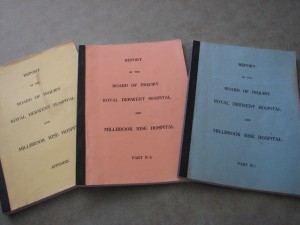 Glad you asked. We have started to scan the Board of Inquiry Report into the Royal Derwent Hospital and Millbrook Rise and load it onto our new tab. So far we have “witness 9’s” account of a staff smacking a child. Each witness was cross-examined in this formal hearing as were those accused of mistreatment and those that had seniority within the management structure. Some cases were dismissed and some were found to be correct accounts of what had occurred. The document draws heavily from the xerox transcript of evidence given by each participant. The Board had the power to summons witnesses to give evidence and it was clear that this was used to get reluctant witnesses to be interviewed and cross-examined. While there are many mixed views of the Hospital and it’s care provision throughout it’s life there were many inquiries both formal and in-formal held during the life of the institution.
Glad you asked. We have started to scan the Board of Inquiry Report into the Royal Derwent Hospital and Millbrook Rise and load it onto our new tab. So far we have “witness 9’s” account of a staff smacking a child. Each witness was cross-examined in this formal hearing as were those accused of mistreatment and those that had seniority within the management structure. Some cases were dismissed and some were found to be correct accounts of what had occurred. The document draws heavily from the xerox transcript of evidence given by each participant. The Board had the power to summons witnesses to give evidence and it was clear that this was used to get reluctant witnesses to be interviewed and cross-examined. While there are many mixed views of the Hospital and it’s care provision throughout it’s life there were many inquiries both formal and in-formal held during the life of the institution. We have change the header on all the webpages to the original letter head used on official documentation from Willow Court Centre. This has already brought back memories for some staff that are members of the group. We have also changed the introduction page and will slowly change all documentation to reflect our new name and ideals.
We have change the header on all the webpages to the original letter head used on official documentation from Willow Court Centre. This has already brought back memories for some staff that are members of the group. We have also changed the introduction page and will slowly change all documentation to reflect our new name and ideals.